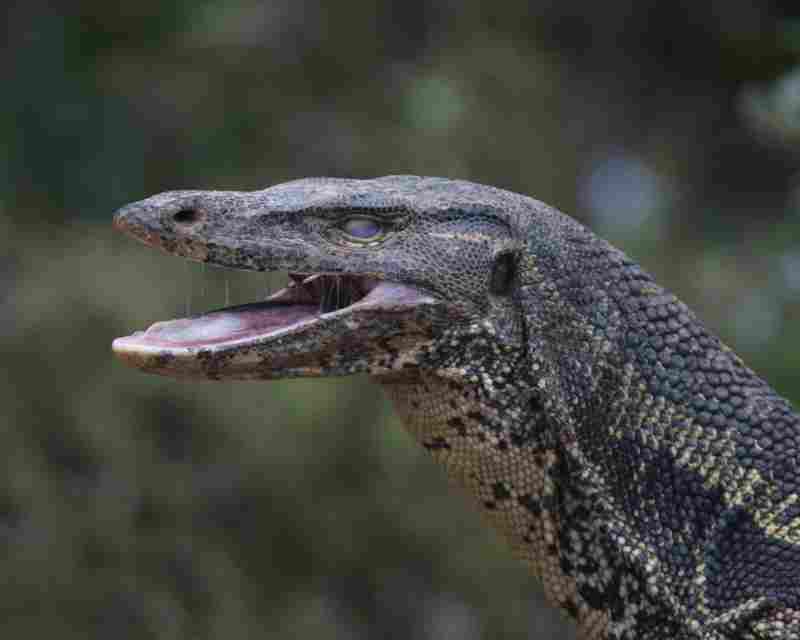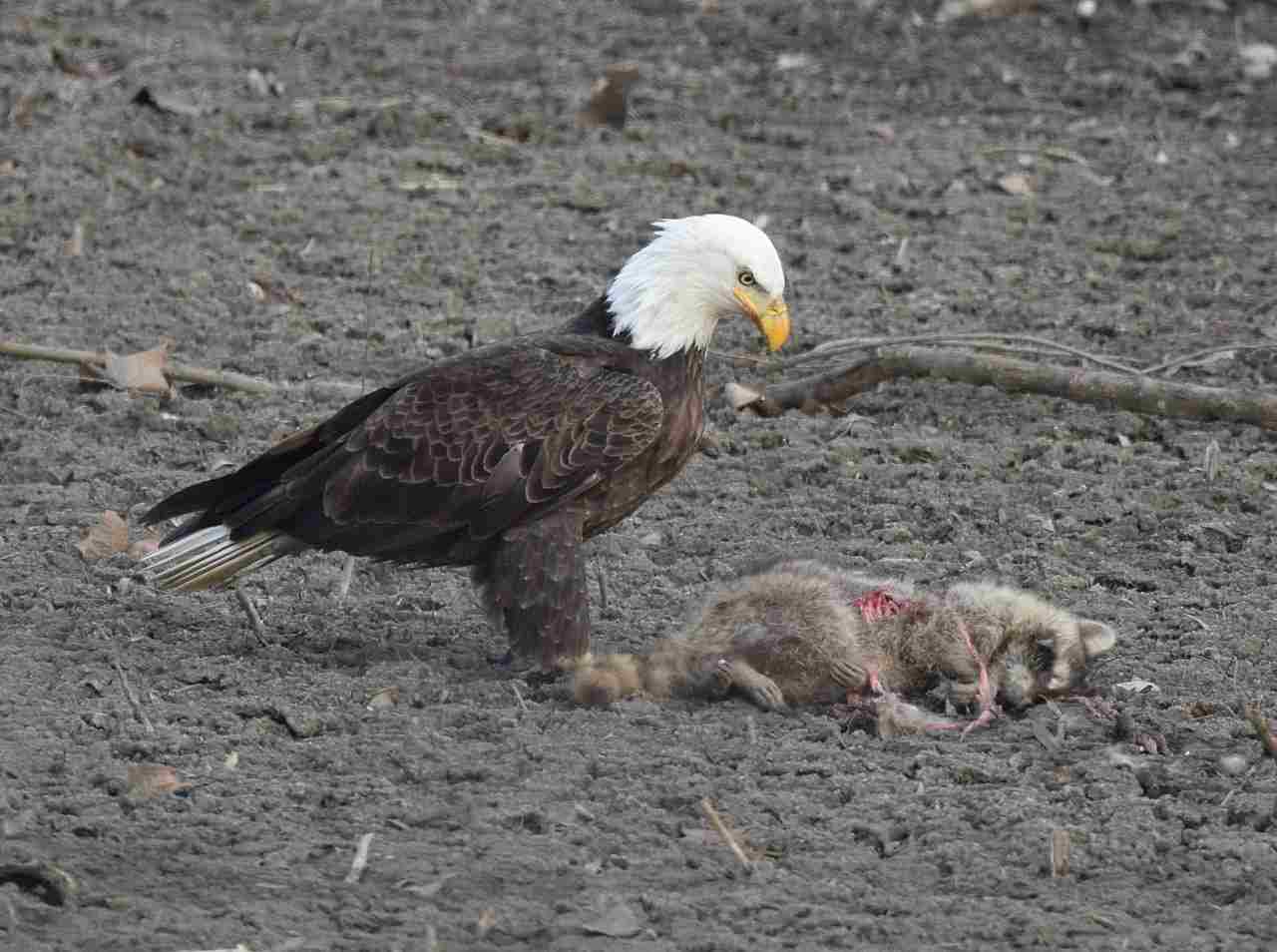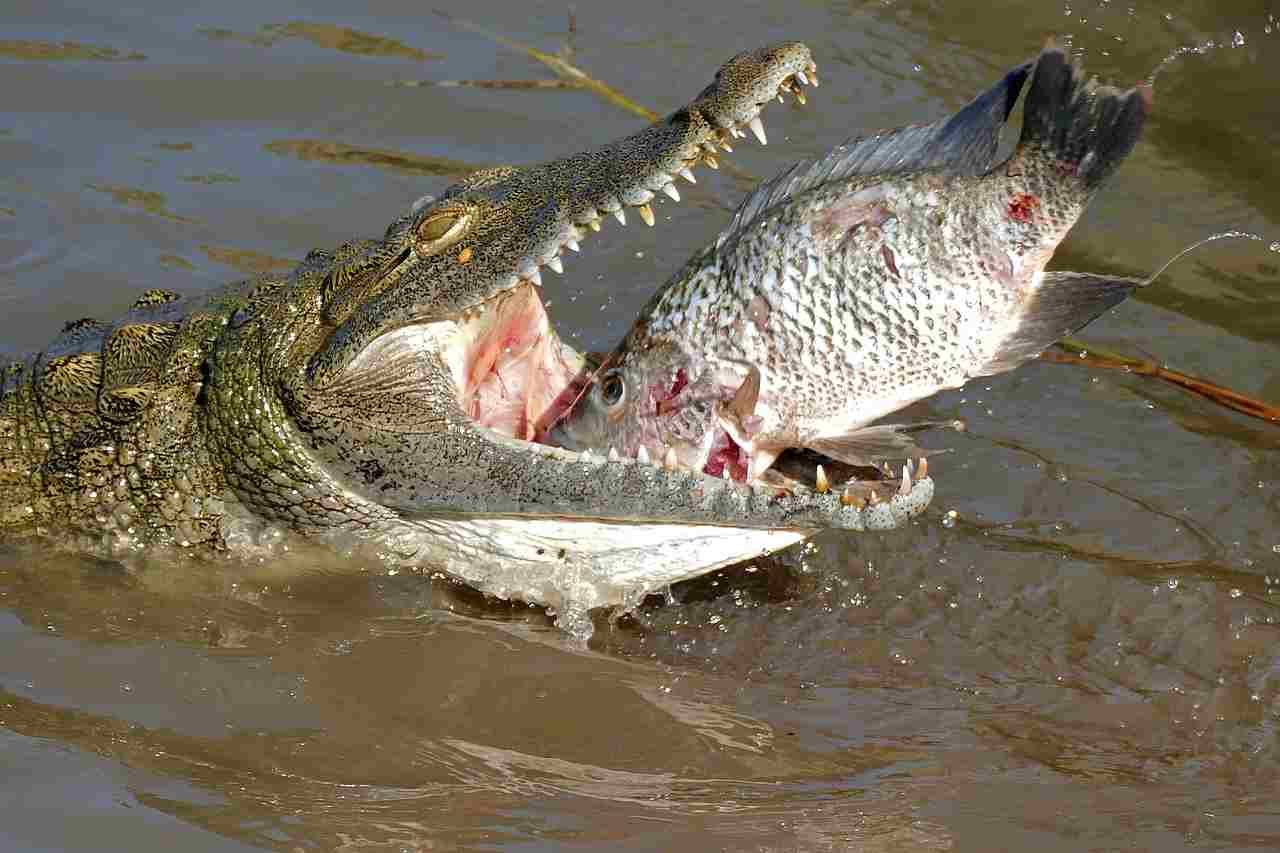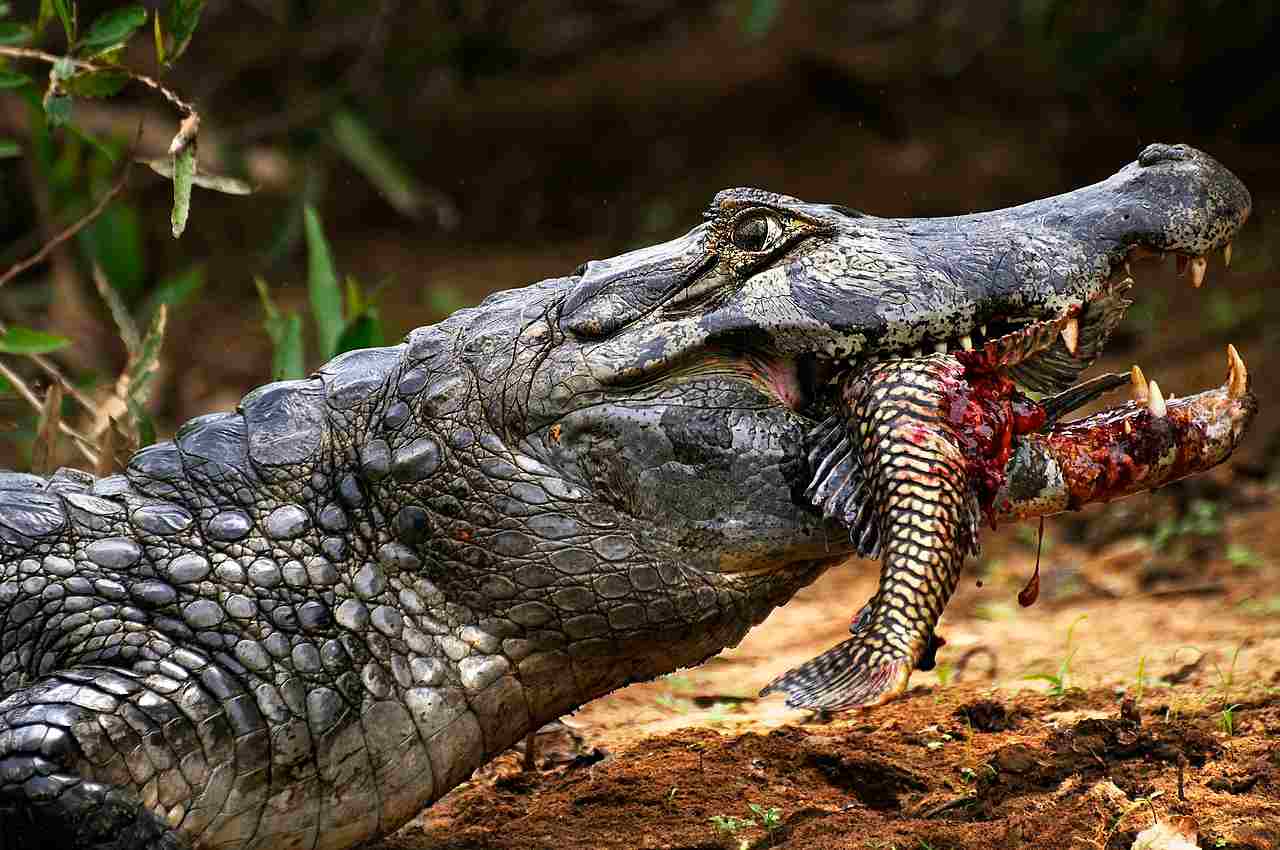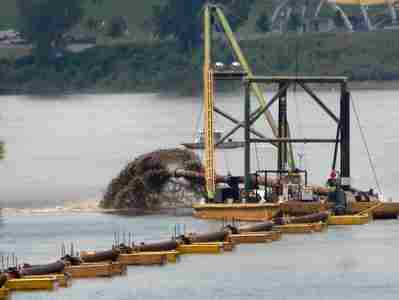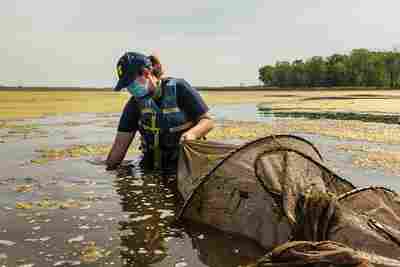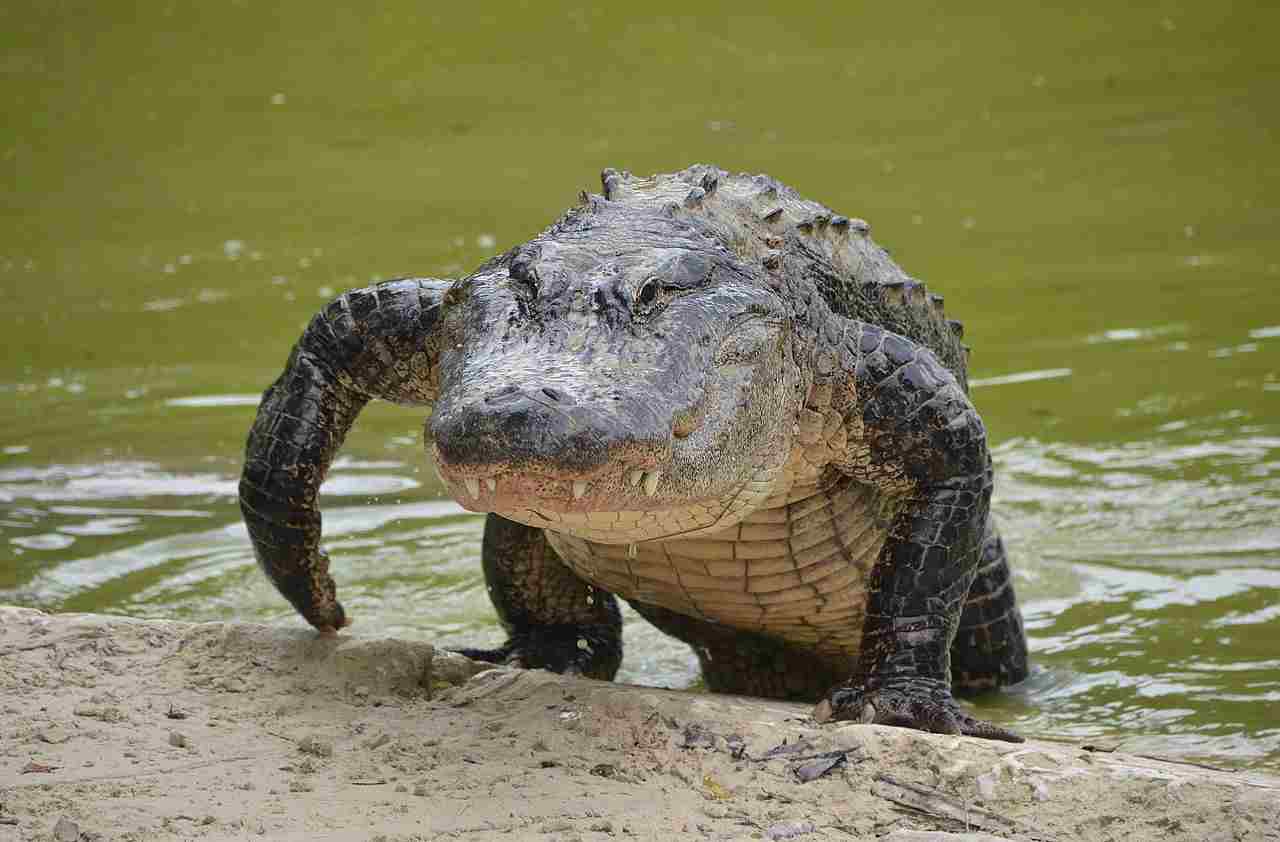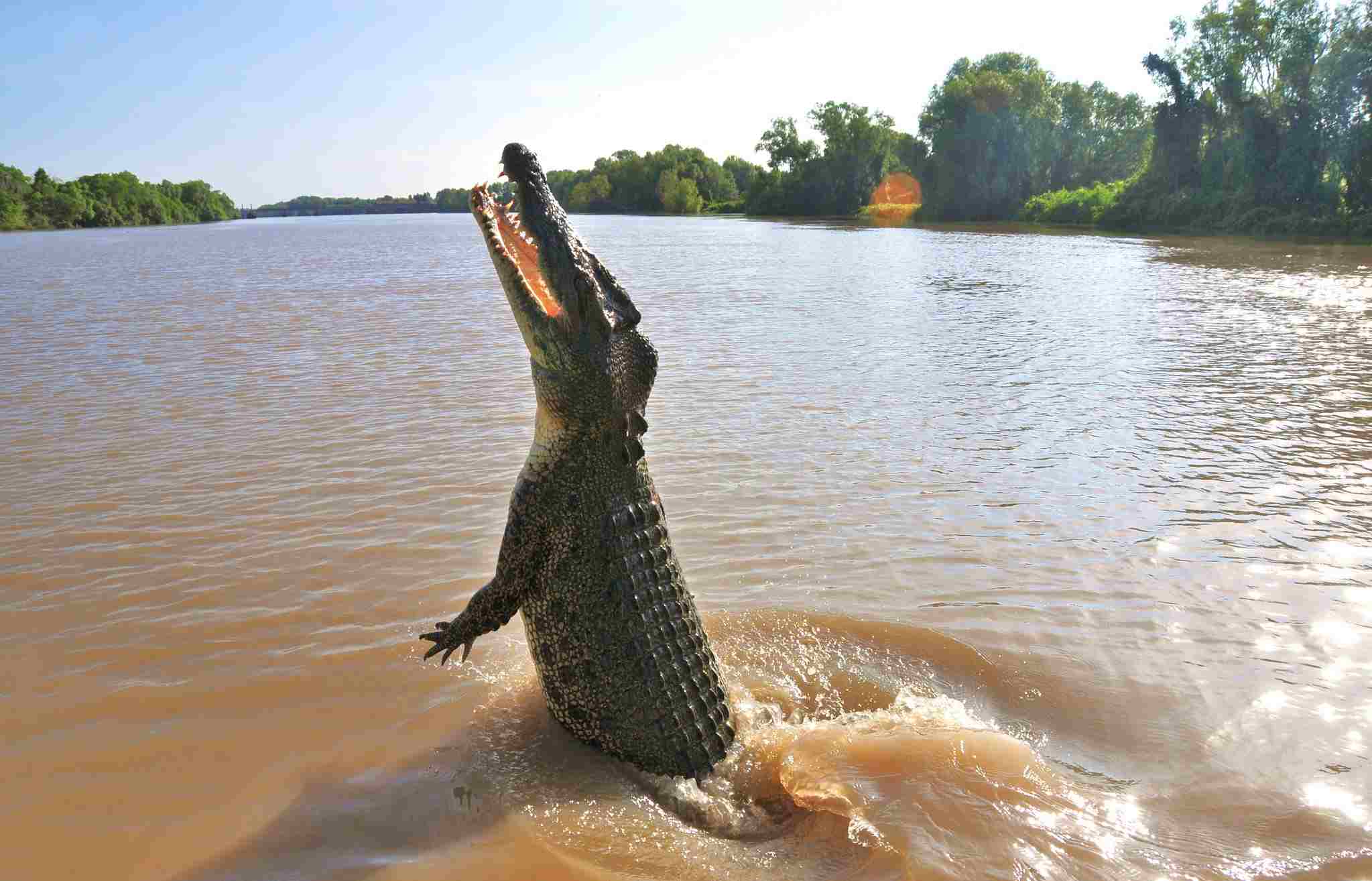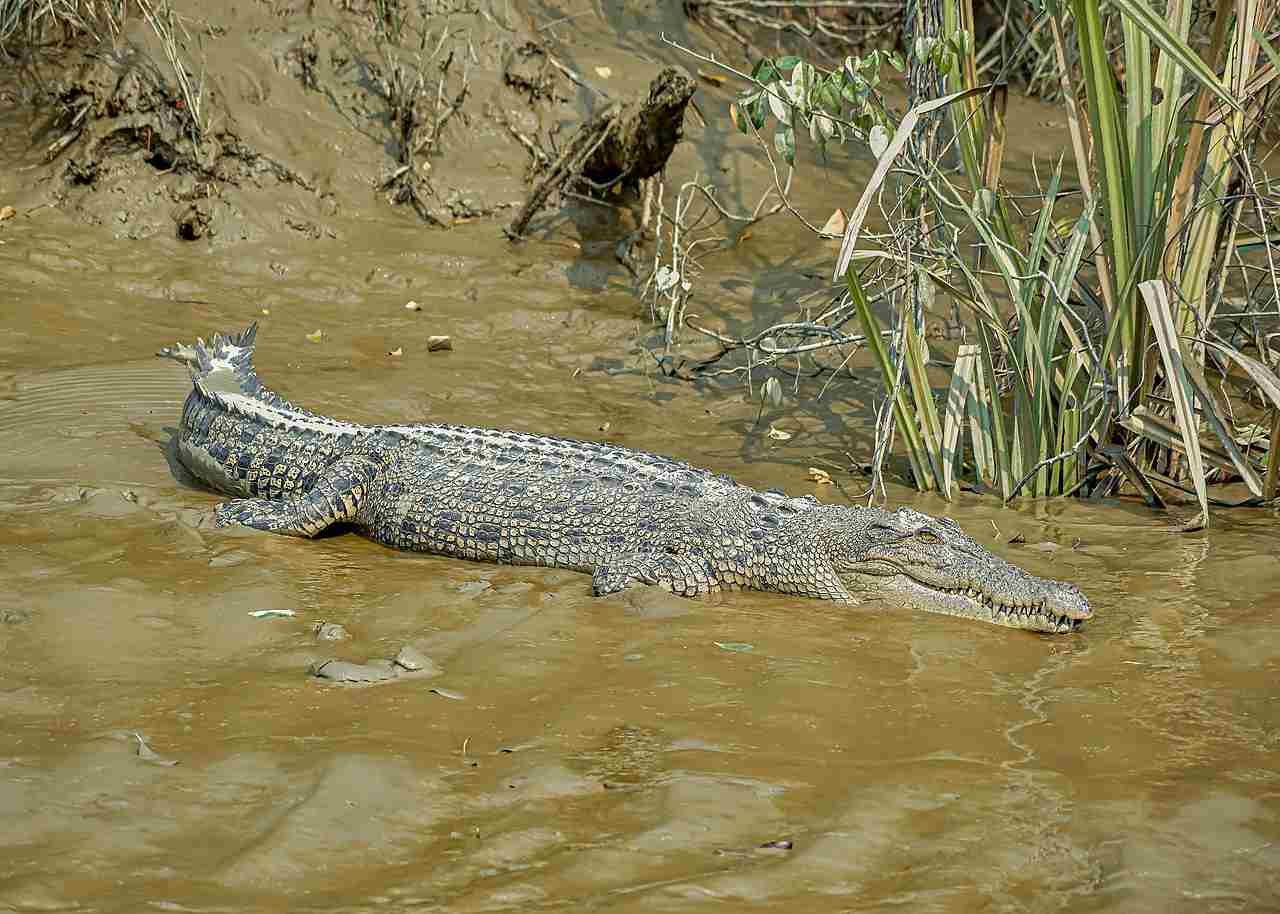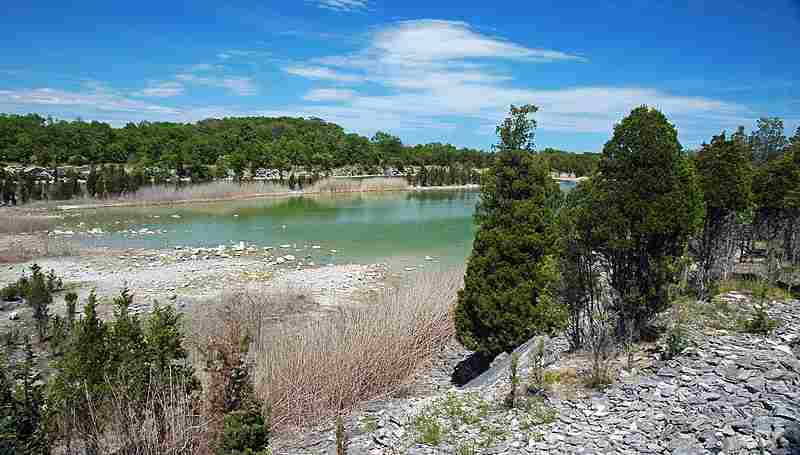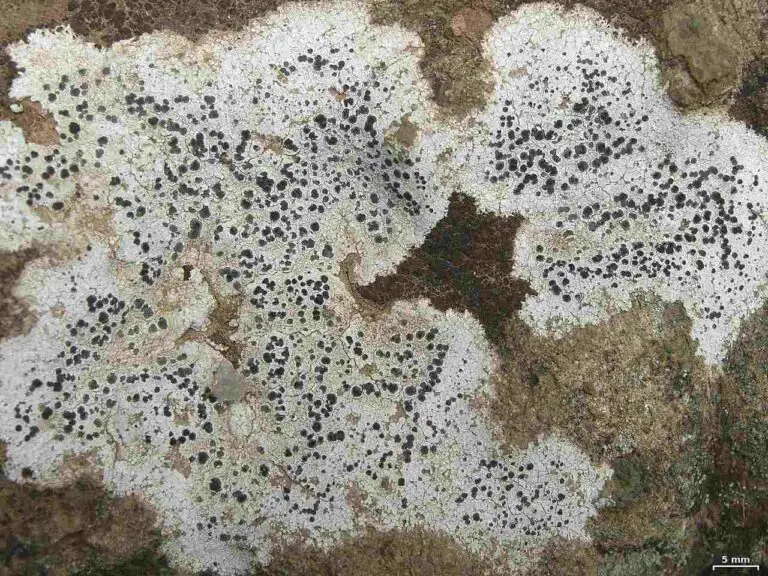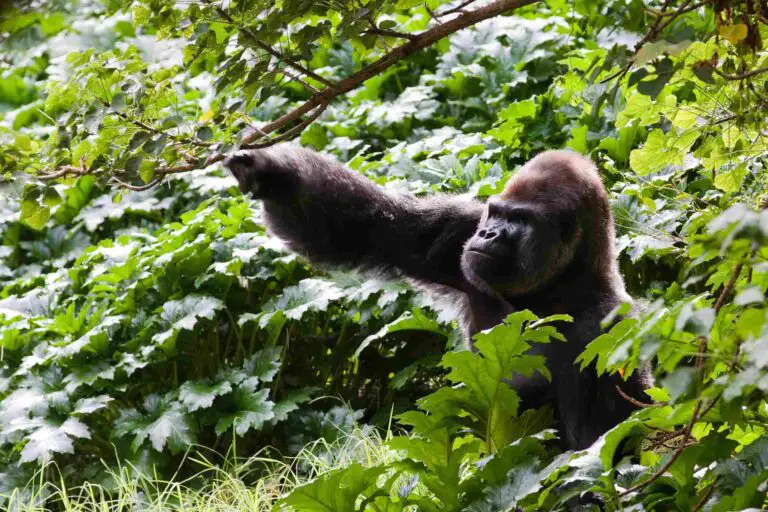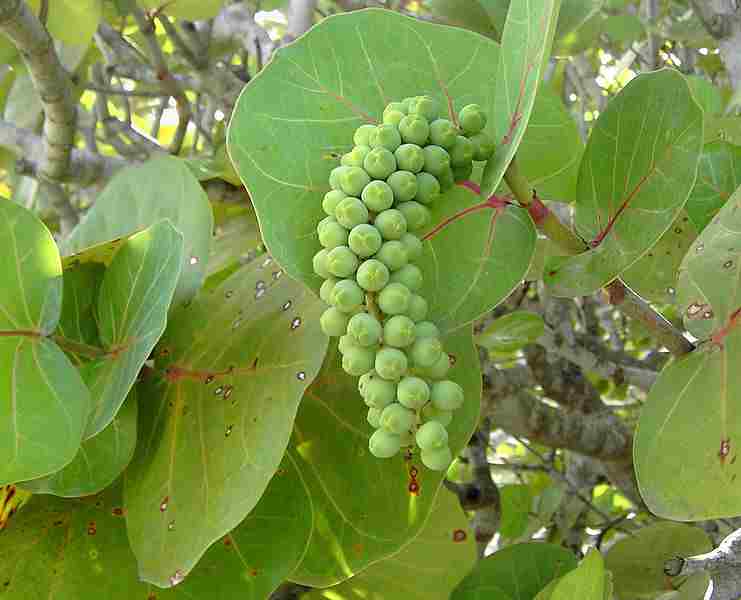11+ Carnivores in Wetlands and Their Characteristics
Examples of carnivores in wetlands are crocodiles, alligators, otters, and eagles. These carnivores play crucial roles in maintaining ecosystem balance by controlling prey populations and contributing to biodiversity. However, they face threats such as habitat loss, pollution, and human disturbance. Conservation efforts and responsible ecotourism can help protect these carnivores and their habitats while raising awareness about the importance of wetland conservation.
1. Crocodile
Crocodiles are formidable apex predators found in wetlands across the globe, from the swamps of Florida to the rivers of Africa and the estuaries of Australia. With their powerful jaws, streamlined bodies, and exceptional stealth, crocodiles dominate their ecosystems as top carnivores. These ancient reptiles are well-adapted to life in wetlands, where they can blend seamlessly into the murky waters, waiting patiently for unsuspecting prey to approach.
Equipped with rows of sharp teeth and incredible jaw strength, crocodiles are capable of taking down prey much larger than themselves. Their diet typically consists of fish, birds, mammals, and occasionally larger prey like buffalo or even other predators. Ambush hunters by nature, crocodiles often lie in wait near the water’s edge, using their keen senses to detect vibrations or movement in the water before launching a lightning-fast attack.
Crocodiles play a crucial role in wetland ecosystems as both predators and scavengers. By controlling prey populations and cleaning up carrion, they help maintain the balance of these delicate habitats. Despite their fearsome reputation, crocodiles are also vulnerable to habitat loss, pollution, and poaching. Conservation efforts are essential to ensure the survival of these magnificent creatures and the ecosystems they inhabit.
2. Alligator
Alligators, like their close relatives the crocodiles, are prominent carnivores in wetland environments, particularly in the southeastern United States and parts of China. While they share similar features with crocodiles, such as their armored bodies and powerful jaws, alligators have distinct differences in their habitat preferences and behavior. Alligators favor freshwater habitats like swamps, marshes, and rivers, where they can thrive in the murky waters, lurking beneath the surface for prey.
Alligators are opportunistic feeders, preying on a variety of animals including fish, amphibians, birds, and mammals. Their hunting strategy often involves lying in wait near the water’s edge, using their keen senses to detect movement or vibrations signaling the presence of potential prey. With a quick burst of speed, alligators can ambush their unsuspecting victims, using their strong jaws to seize and subdue them.
Despite their formidable hunting abilities, alligators also play a vital ecological role in wetland ecosystems. As apex predators, they help regulate prey populations and maintain the balance of their habitats. However, like crocodiles, alligators face threats from habitat loss, pollution, and human encroachment. Conservation efforts are crucial to protect these iconic reptiles and the wetlands they call home.
3. Otter
Otters are charismatic semi-aquatic carnivores that inhabit a variety of wetland habitats around the world, including rivers, lakes, and coastal areas. Known for their playful behavior and streamlined bodies, otters are highly adapted to life both in and out of the water. Their sleek fur and webbed feet make them efficient swimmers, while their sharp teeth and agile limbs aid in hunting and capturing prey.
Otters are primarily carnivorous, with a diet that varies depending on their habitat and available prey species. Fish make up a significant portion of their diet, but otters also consume crustaceans, amphibians, small mammals, and birds. They are skilled hunters, using their keen senses of sight, smell, and touch to locate prey underwater. Otters are known to forage individually or in small family groups, using teamwork to corral fish or other prey into manageable catch zones.
As top predators in their ecosystems, otters play a crucial role in maintaining the health and diversity of wetland habitats. By controlling prey populations and influencing aquatic ecosystems, otters help regulate the balance of these delicate environments. However, otters face threats from habitat destruction, pollution, and human disturbance. Conservation efforts are essential to protect these playful yet vital members of wetland communities.
4. Osprey
Ospreys, also known as fish eagles or sea hawks, are formidable carnivorous birds of prey that inhabit wetland environments around the world. With their distinctive white heads, dark brown bodies, and impressive wingspans, ospreys are well-adapted to their aquatic lifestyles. They are highly specialized hunters, primarily feeding on fish caught from freshwater lakes, rivers, and coastal waters.
Ospreys are superb fishermen, possessing unique adaptations that make them highly efficient hunters. Their sharp talons and powerful legs enable them to plunge feet-first into the water, grasping fish with incredible precision and strength. Ospreys are also known for their keen eyesight, which allows them to spot prey from high above the water’s surface. After catching a fish, ospreys will often carry it to a nearby perch to consume, tearing it apart with their hooked beaks.
As top predators in wetland ecosystems, ospreys help regulate fish populations and maintain the balance of aquatic food webs. Their presence indicates the health and productivity of their habitats, making them valuable indicators of environmental quality. However, ospreys face threats from habitat loss, pollution, and human disturbance, including collisions with power lines and entanglement in fishing gear. Conservation efforts are crucial to protect these majestic birds and the wetlands they rely on for survival.
5. Eagle
Eagles, renowned for their majestic appearance and powerful hunting prowess, are apex predators found in various ecosystems worldwide, including wetlands. While several species of eagles inhabit wetland environments, the most notable is the bald eagle, which is closely associated with North American waterways and coastlines. Eagles are renowned for their keen eyesight, soaring flight, and formidable talons, which make them formidable hunters in both terrestrial and aquatic habitats.
In wetland environments, eagles primarily prey on fish, waterfowl, and other small to medium-sized aquatic animals. Their hunting techniques often involve soaring high above the water, scanning the surface for signs of prey activity. Once a target is spotted, eagles dive down with incredible speed and accuracy, using their sharp talons to snatch fish or waterfowl from the water’s surface.
As apex predators, eagles play a vital role in regulating the populations of their prey species and maintaining the overall health of wetland ecosystems. Their presence is indicative of the ecological richness and biodiversity of these habitats. However, like many top predators, eagles face threats from habitat loss, pollution, and human disturbance. Conservation efforts are essential to protect these iconic birds and the wetlands they inhabit.
6. Cougar
While commonly associated with mountainous regions and forests, cougars, also known as mountain lions or pumas, can also be found in wetland environments across their range in North and South America. These solitary and elusive carnivores are highly adaptable and can thrive in a variety of habitats, including swamps, marshes, and riparian areas.
In wetland environments, cougars primarily prey on a diverse range of animals, including deer, raccoons, rodents, and occasionally fish or waterfowl. Their hunting strategy often involves stalking and ambushing prey from concealed positions, using their powerful muscles and sharp claws to deliver a swift and lethal attack. Cougars are apex predators in their ecosystems, playing a crucial role in regulating prey populations and maintaining ecological balance.
Despite their adaptability, cougars face numerous threats in wetland habitats, including habitat loss, fragmentation, and human-wildlife conflict. Encroachment by human development and infrastructure can disrupt cougar populations and their prey base, leading to increased conflict and potential declines in cougar numbers. Conservation efforts aimed at preserving and restoring wetland habitats are essential for ensuring the long-term survival of these magnificent predators.
7. Pampas Cat
The Pampas cat, native to South America, is a small and elusive carnivore that inhabits a variety of habitats, including wetlands such as marshes, swamps, and riparian areas. Named after the vast grasslands of the Pampas region, these cats are well-adapted to life in diverse landscapes, from open grasslands to dense forests and wetlands.
In wetland environments, Pampas cats primarily prey on small mammals, birds, reptiles, and amphibians. Their hunting strategy often involves stalking and pouncing on unsuspecting prey from concealed positions, using their sharp claws and teeth to deliver a swift and precise kill. Pampas cats are solitary and nocturnal hunters, relying on stealth and agility to catch their prey under the cover of darkness.
As mesopredators in wetland ecosystems, Pampas cats play a vital role in controlling populations of small mammals and birds, thereby helping to maintain the balance of their habitats. However, like many small carnivores, Pampas cats face threats from habitat loss, fragmentation, and human persecution. Conservation efforts aimed at protecting and restoring wetland habitats are essential for ensuring the survival of these elusive felines and the biodiversity they support.
8. Andean Cat
The Andean cat, also known as the Andean mountain cat, is a small and elusive carnivore native to the high Andes mountains of South America. While primarily associated with mountainous habitats, Andean cats have also been documented in wetland environments such as marshes and peatlands within their range. These cats are exceptionally rare and poorly understood, making them one of the least-known felid species in the world.
In wetland habitats, Andean cats primarily prey on small mammals, birds, and occasionally reptiles and amphibians. Their hunting strategy often involves stalking and ambushing prey from concealed positions, using their keen senses of sight, hearing, and smell to detect and capture prey. Andean cats are solitary and elusive hunters, relying on stealth and agility to navigate their rugged and inhospitable habitats.
As apex predators in their ecosystems, Andean cats play a crucial role in controlling populations of small mammals and birds, thereby helping to maintain the balance of wetland ecosystems. However, like many small carnivores, Andean cats face numerous threats, including habitat loss, fragmentation, and human persecution. Conservation efforts aimed at protecting and restoring wetland habitats are essential for ensuring the survival of these rare and elusive felids.
9. Frog
Frogs are amphibious carnivores commonly found in wetland environments around the world, including ponds, marshes, and swamps. These highly adaptable creatures are essential components of aquatic ecosystems, serving as both predators and prey in complex food webs. Frogs are renowned for their distinctive calls, which they use for communication and mate attraction during the breeding season.
In wetland habitats, frogs primarily prey on insects, spiders, small fish, and other aquatic invertebrates. Their diet may also include smaller frogs and tadpoles, making them important regulators of prey populations within their ecosystems. Frogs are opportunistic feeders, using their long, sticky tongues to capture prey with lightning-fast precision.
As key predators in wetland food webs, frogs play a crucial role in controlling insect populations and maintaining the balance of their habitats. However, frogs face numerous threats, including habitat destruction, pollution, climate change, and disease. Conservation efforts aimed at protecting and restoring wetland habitats are essential for ensuring the survival of these important amphibious predators.
10. Dragonfly
Dragonflies are aerial carnivores commonly found in and around wetland habitats, where they play a crucial role in controlling insect populations and maintaining ecosystem balance. These ancient insects are known for their agile flight, striking colors, and formidable hunting skills, making them top predators in aquatic environments.
In wetland habitats, dragonflies primarily prey on smaller insects such as mosquitoes, flies, and gnats. Their hunting strategy often involves patrolling the water’s surface or perching on vegetation, waiting to ambush passing prey. Dragonflies are incredibly agile flyers, capable of sudden bursts of speed and precision maneuvers to catch their quarry mid-flight.
As apex predators in wetland ecosystems, dragonflies help regulate insect populations, thereby reducing the risk of disease transmission and maintaining the overall health of their habitats. However, dragonflies face threats from habitat loss, pollution, climate change, and pesticide use. Conservation efforts aimed at protecting and restoring wetland habitats are essential for ensuring the survival of these important aerial predators.
11. Common Water Snake
The common water snake, as its name suggests, is a non-venomous aquatic snake commonly found in wetland habitats across North America. These snakes are well-adapted to life in and around water, where they play a crucial role in controlling populations of fish, amphibians, and other aquatic prey species. Despite their name, common water snakes are often misunderstood and mistaken for venomous species, leading to unnecessary fear and persecution.
In wetland environments, common water snakes primarily prey on fish, frogs, tadpoles, and small mammals. Their hunting strategy often involves lying in wait near the water’s edge, using their keen senses of smell and vibration detection to locate prey. Common water snakes are proficient swimmers, capable of navigating through marshes, ponds, and slow-moving streams in search of food.
As important predators in wetland ecosystems, common water snakes help regulate populations of prey species and maintain the balance of their habitats. However, like many snakes, they face threats from habitat loss, pollution, and human persecution. Conservation efforts aimed at protecting and restoring wetland habitats are essential for ensuring the survival of these valuable predators.
12. Eastern Water Dragon
The Eastern water dragon is a semi-aquatic lizard native to Australia, where it inhabits a variety of wetland environments, including rivers, streams, and coastal areas. These impressive reptiles are well-adapted to life both in and out of the water, with streamlined bodies, powerful limbs, and long tails that aid in swimming and navigation.
In wetland habitats, Eastern water dragons primarily prey on insects, spiders, small fish, and aquatic invertebrates. Their hunting strategy often involves basking on rocks or branches near the water’s edge, waiting to ambush passing prey. Eastern water dragons are skilled hunters, using their sharp eyesight and lightning-fast reflexes to catch insects and other small prey.
As top predators in their ecosystems, Eastern water dragons play a crucial role in controlling populations of insects and other aquatic prey species. They also serve as important indicators of ecosystem health, with declines in their populations often signaling environmental degradation. Conservation efforts aimed at protecting and restoring wetland habitats are essential for ensuring the survival of these fascinating reptiles.
13. Water Monitor
The water monitor, also known as the Asian water monitor or Varanus salvator, is a large and powerful lizard native to Southeast Asia. These formidable reptiles are highly adaptable and can be found in a variety of habitats, including wetlands, rivers, mangroves, and coastal areas. Water monitors are renowned for their impressive size, reaching lengths of up to six feet or more, making them one of the largest lizards in the world.
In wetland environments, water monitors are opportunistic predators, feeding on a wide range of prey including fish, amphibians, birds, reptiles, and small mammals. Their hunting strategy often involves patrolling the water’s edge or swimming in search of prey. Water monitors are skilled swimmers, capable of diving beneath the surface to catch fish or other aquatic prey.
As apex predators in their ecosystems, water monitors play a crucial role in controlling populations of prey species and maintaining the balance of wetland habitats. However, like many large predators, they face threats from habitat loss, pollution, and human persecution. Conservation efforts aimed at protecting and restoring wetland habitats are essential for ensuring the survival of these impressive reptiles.
*Summary
-
Crocodile
-
Formidable apex predator in wetlands
-
Equipped with powerful jaws and stealthy hunting tactics
-
Preys on fish, birds, mammals, and occasionally larger animals
-
Plays a crucial role in controlling prey populations and ecosystem balance
-
Vulnerable to habitat loss, pollution, and poaching
-
-
Alligator
-
Similar to crocodiles but prefer freshwater habitats
-
Opportunistic feeders on fish, amphibians, birds, and mammals
-
Play a vital role in regulating prey populations and wetland ecosystems
-
Threatened by habitat loss, pollution, and human encroachment
-
-
Otter
-
Charismatic semi-aquatic carnivores inhabiting wetlands
-
Prey on fish, crustaceans, amphibians, and small mammals
-
Play a crucial role in controlling prey populations and ecosystem health
-
Vulnerable to habitat destruction and human disturbance
-
-
Osprey
-
Fish-eating birds of prey found in wetland environments
-
Dive to catch fish with sharp talons and powerful legs
-
Indicators of wetland health and biodiversity
-
Threatened by habitat loss, pollution, and human activities
-
-
Eagle
-
Majestic birds of prey hunting in wetlands
-
Dive to catch fish and waterfowl with keen eyesight and sharp talons
-
Crucial for controlling prey populations and ecosystem balance
-
Face threats from habitat loss, pollution, and human activities
-
-
Cougar
-
Solitary predators inhabiting wetland environments
-
Prey on deer, rodents, and occasionally fish or waterfowl
-
Play a vital role in regulating prey populations
-
Threatened by habitat loss and human-wildlife conflict
-
-
Pampas Cat
-
Small carnivores adapted to various habitats including wetlands
-
Prey on small mammals, birds, reptiles, and amphibians
-
Help maintain ecosystem balance as mesopredators
-
Face threats from habitat loss and human persecution
-
-
Andean Cat
-
Rare and elusive felids inhabiting high Andes mountains and wetlands
-
Prey on small mammals, birds, and reptiles
-
Play a crucial role in controlling prey populations
-
Threatened by habitat loss and human activities
-
-
Frog
-
Amphibious carnivores found in wetland habitats
-
Prey on insects, small fish, and other aquatic invertebrates
-
Crucial for controlling insect populations and ecosystem health
-
Face threats from habitat destruction, pollution, and disease
-
-
Dragonfly
-
Aerial predators commonly found in wetlands
-
Prey on mosquitoes, flies, and other insects
-
Crucial for controlling insect populations and ecosystem balance
-
Vulnerable to habitat loss, pollution, and pesticide use
-
-
Common Water Snake
-
Non-venomous snakes inhabiting wetland habitats
-
Prey on fish, frogs, and small mammals
-
Play a crucial role in controlling prey populations
-
Face threats from habitat loss and human persecution
-
-
Eastern Water Dragon
-
Semi-aquatic lizards native to Australia and wetlands
-
Prey on insects, small fish, and aquatic invertebrates
-
Indicators of ecosystem health and biodiversity
-
Vulnerable to habitat loss and human activities
-
-
Water Monitor
-
Large and powerful lizards found in wetland environments
-
Prey on a wide range of aquatic and terrestrial prey
-
Play a crucial role in controlling prey populations
-
Threatened by habitat loss and human persecution
-
| Carnivores in Wetlands | Summary |
| Crocodile |
Apex predator with powerful jaws, preys on fish, birds, mammals, plays crucial role in ecosystem balance
|
| Alligator |
Freshwater predator, feeds on fish, amphibians, mammals, vital for wetland ecosystem regulation
|
| Otter |
Semi-aquatic, feeds on fish, crustaceans, mammals, important for prey control and ecosystem health
|
| Osprey |
Fish-eating bird of prey, key indicator of wetland health, faces threats from habitat loss
|
| Eagle |
Majestic bird of prey, hunts fish and waterfowl, crucial for prey regulation in wetlands
|
| Cougar |
Solitary predator, preys on deer, rodents, plays vital role in prey regulation
|
| Pampas Cat |
Small carnivore, preys on mammals, birds, helps maintain ecosystem balance
|
| Andean Cat |
Rare felid, preys on small mammals, birds, crucial for prey control
|
| Frog |
Amphibious predator, feeds on insects, fish, vital for insect population control
|
| Dragonfly |
Aerial predator, controls insect populations, faces threats from habitat loss
|
| Common Water Snake |
Non-venomous snake, preys on fish, frogs, vital for prey regulation
|
| Eastern Water Dragon |
Semi-aquatic lizard, feeds on insects, fish, indicator of ecosystem health
|
| Water Monitor |
Large lizard, preys on various aquatic and terrestrial species, crucial for prey control
|
Related FAQs
Q: Why are carnivores important in wetland ecosystems? A: Carnivores play a crucial role in wetland ecosystems by regulating prey populations, maintaining the balance of the food chain, and contributing to overall ecosystem health. They help control prey populations, which in turn prevents overgrazing and maintains biodiversity.
Q: What threats do carnivores in wetlands face? A: Carnivores in wetlands face various threats, including habitat loss and degradation due to human activities such as urbanization, agriculture, and infrastructure development. Pollution, climate change, and human-wildlife conflict also pose significant challenges to their survival.
Q: How do conservation efforts help protect carnivores in wetlands? A: Conservation efforts aimed at protecting and restoring wetland habitats are essential for safeguarding carnivores. These efforts may include habitat restoration, establishment of protected areas, implementation of wildlife corridors, and public education about the importance of wetland conservation.
Q: What can individuals do to help conserve carnivores in wetlands? A: Individuals can contribute to carnivore conservation efforts by supporting organizations dedicated to wildlife conservation, reducing their carbon footprint to mitigate climate change, advocating for wetland protection and restoration, and practicing responsible wildlife viewing and outdoor recreation.
Q: How do carnivores in wetlands contribute to ecotourism? A: Carnivores in wetlands, such as crocodiles, alligators, and otters, are often charismatic species that attract ecotourists. Responsible ecotourism can provide economic incentives for conservation efforts while raising awareness about the importance of protecting wetland habitats and their inhabitants.
